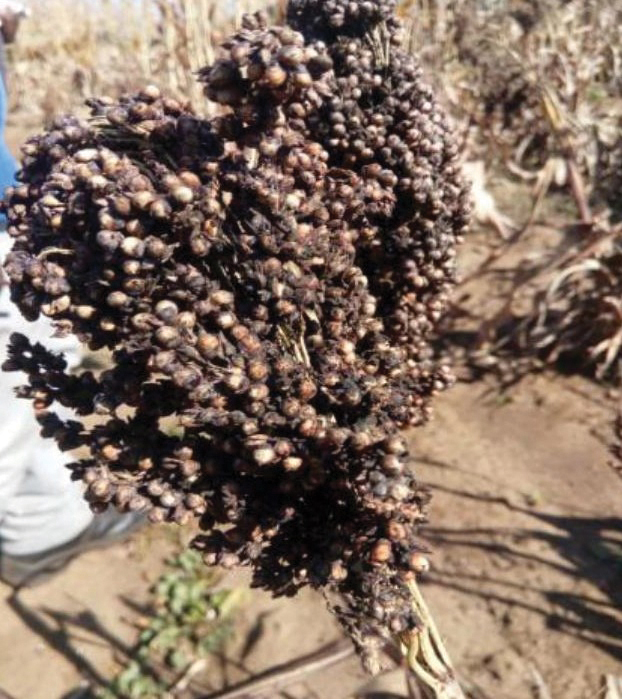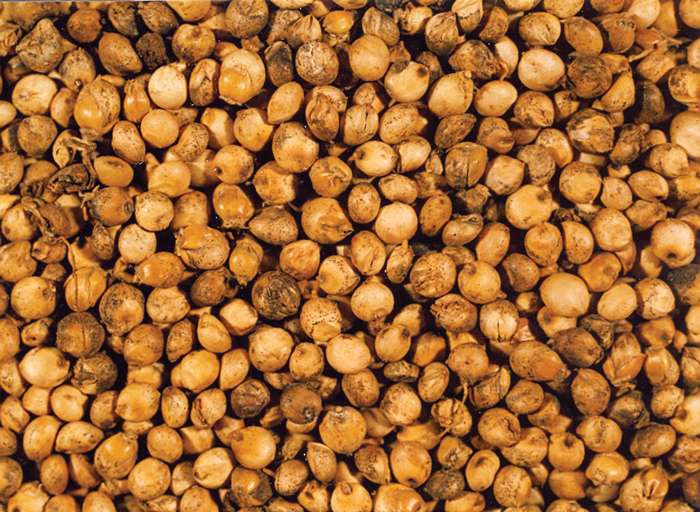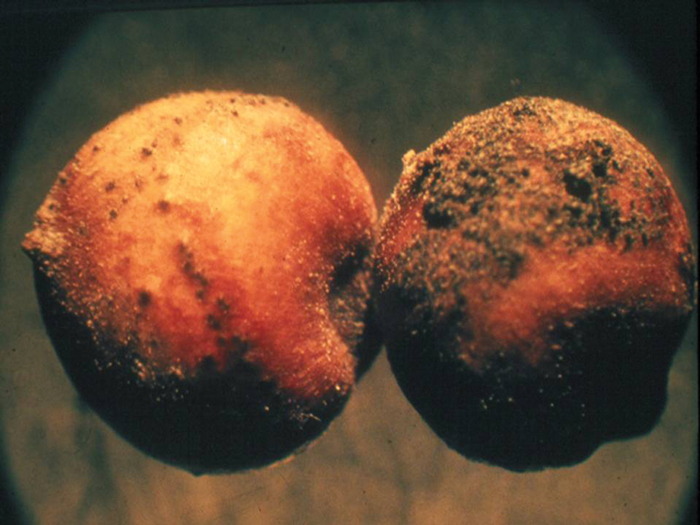
ARC-Grain Crops, Potchefstroom

Dr Bradley Flett,
ARC-Grain Crops, Potchefstroom
Sorghum (Sorghum bicolor (L) Moench) is a gluten-free, high-protein crop that contains approximately 70% resistant starch that can suppress hunger and is thus suitable for celiac disease patients. In South Africa’s main production areas, grain sorghum is susceptible to several fungal foliar and panicle diseases. The yield and quality of sorghum grains in these areas are significantly lower than in developed countries.
Grain mould is a complex disease caused by various species from various genera of fungi and is one of the primary biotic constraints limiting sorghum production and quality in South Africa. It reduces grain quality and can cause yield losses of up to 100% depending on the cultivar, flowering time, and weather conditions during flowering and harvesting. Mould fungi also cause a reduction in endosperm density and deterioration of yield which result in lower milling quality of sorghum grains.
These decreases in grain quality render the grain unacceptable by consumers, translating into a reduction in market value. Grain mould fungi can also affect the germination and viability of sorghum seeds. The loss of seed germination is directly proportional to an increased level of grain mould severity. Control of grain moulds in seed nurseries is therefore critical to ensure viable seed and optimum germination.
Grain mould causal organisms
Grain mould on sorghum is a complex disease caused by both pathogenic and saprophytic fungi (Photo 1) that belong to 40 different genera infecting immature grains through to grain fill. These disease-causing fungi include Fusarium, Alternaria, Aspergillus, Phoma, Epicoccum and Curvularia spp. Most of the other fungi found on sorghum seeds are not considered true pathogens, but rather superficial colonisers at later stages of development that cause relatively less damage, yet still lead to discolouration of the grain. These late saprophytic colonisers may penetrate the grain deeper if favourable conditions persist until post-maturity.

This type of mould is more common where flowering and grain maturity occur in conjunction with warm weather and high humidity. Grain mould-causing fungi can spread through the soil and air and many survive on crop residues where it can often be recovered from any part of the infected plant. The primary source of inoculum of these grain mould pathogens in the field is plant residues and soils containing fungal hyphae and conidia.
Dispersal and survival of grain mould fungi
Fungi known to infect grains primarily appear to be airborne. Fusarium, Alternaria, Curvularia, Helminthosporium, Cladosporium, and Epicoccum spp. have all been found to produce many spores which are generally airborne. Similarly, Alternaria and Curvularia spp. are frequently found in the atmosphere over wheat fields. Wind and air currents are also known to disseminate Fusarium head blight of wheat. Pathogens are disseminated by wind and rain splash in sorghum grain mould. For example, spores of Fusarium, Curvularia, and Alternaria spp. can be present in the air above a sorghum field during all grain developmental stages that start at flowering.
Wet conditions and high humidity are conducive to spore production and dispersal and grain mould pathogen spore concentrations in the air above sorghum fields increase during wetter seasons and decrease during dry seasons. Secondary saprophytic infections occur after initial infections by pathogens and play an important role in the further development of sorghum grain moulds. Sporulation on infected grain may serve as a source of secondary infection in the field.
Early and post-infection colonisation
Early grain infections involve infection of spikelet tissues by pathogenic species prior to grain fill. One of the first visible symptoms of fungal infection is pigmentation of the lemma, palea, glumes, and lodicules. This is a highly cultivar-dependent pigmentation and the mouldy appearance of grain during post-maturity colonisation is visualised (Photo 2 and Photo 3). The colour of the mouldiness depends on the fungal pathogens involved. In the field it is difficult to distinguish between early infections and post-maturity colonisation because both conditions occur concurrently and late-season colonisation can mask symptoms of infection that occurred during early grain development.


Damage and symptoms of grain mould on sorghum
Grain mould disease symptoms often manifest on sorghum in the field and may be either/or a combination of pink, grey, white or black discolouration of the grain surface. Damage caused by grain mould on yield and quality of sorghum grain includes reduction in grain size, kernel mass, nutritional quality and complete destruction of grain kernels (Photo 2).
Seed mass, grain density, seed germination, storage quality, food and feed processing quality, and grain market value have also been linked to grain mould damage. Most grain mould pathogens infect panicle seeds in the field, where they can multiply and spread to other seeds under favourable post-harvest conditions. Mouldy panicle percentage and infected grain percentage on a panicle are indicators of disease incidence and severity, respectively (Photo 3).
Mould mycotoxins
Grain mould, in its broadest sense, is one of the most significant biotic constraints to global sorghum improvement and production. Another important aspect of grain mould is the contamination of grain with mycotoxins, which has serious public health implications. Fumonisin (FB), zearalenone (ZEA) and deoxynivalenol (DON) (produced by Fusarium species); and aflatoxin (AFLA, produced by Aspergillus flavus) are the mycotoxins most found in South African sorghum.
These fungi and their mycotoxins can contaminate cereal crops such as millet and maize, making them unfit for human consumption and animal feed, as well as jeopardising agricultural productivity and profitability.
Control measures
Adjust the sowing time to avoid grain fill taking place during wet, humid conditions that promote infection and growth of sorghum grain moulds.
Spraying of certain fungicides during intermittent rainfall, during ear head emergence and during milky stage is suggested in many other sorghum-producing countries. However, regarding recommendations in South Africa, the authors are unaware of any fungicides registered for sorghum production. Producers may spray fungicides as a preventative measure, but the timing of sprays must be optimised.
Other control measures include planting disease-free seeds, rotating with non-graminaceous crops and planting hybrids resistant to grain mould.
 If these various control measures are properly implemented in an integrated disease control strategy, they will reduce the impact of the sorghum grain moulds.
If these various control measures are properly implemented in an integrated disease control strategy, they will reduce the impact of the sorghum grain moulds.
For more information, contact Desmond Nkoko or Dr Bradley Flett at 018 299 6100.



























